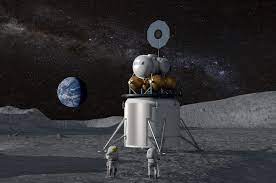NASA’s Artemis Program:

The first moonbound rocket and spacecraft of NASA’s Artemis program are expected to do a “wet dress rehearsal” on the launch pad in February.
- Artemis– Acceleration, Reconnection, Turbulence and Electrodynamics of Moon’s Interaction with the Sun.
- It is NASA’s next mission to the Moon.
- Objective: To measure what happens when the Sun’s radiation hits our rocky moon, where there is no magnetic field to protect it.
- Artemis was the twin sister of Apollo and goddess of the Moon in Greek mythology.
- With the Artemis program, NASA will land the first woman and next man on the Moon by 2024.
- NASA’s powerful new rocket, the Space Launch System (SLS), will send astronauts aboard the Orion spacecraft nearly a quarter million miles from Earth to lunar orbit.
- Astronauts will dock Orion at the Gateway and transfer to a human landing system for expeditions to the surface of the Moon.
- They will return to the orbital outpost to board Orion again before returning safely to Earth.
- Artemis 1, 2:
- The agency will fly two missions around the Moon to test its deep space exploration systems.
- Artemis 1 is aiming to send an uncrewed spacecraft around the moon using a combination of the never-flown Space Launch System rocket, along with the once-flown Orion spacecraft.
- NASA hopes to extend the program with the moon-orbiting crewed Artemis 2 mission in 2024, then a landing on Artemis 3 in 2025, ahead of other crewed missions later in the 2020s.




